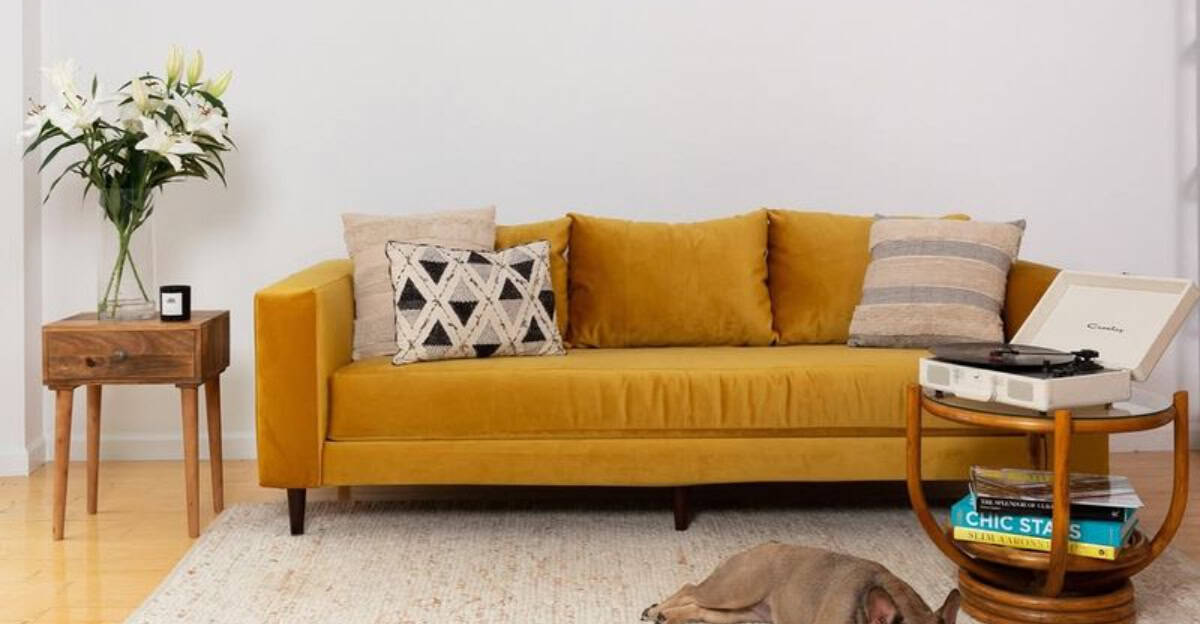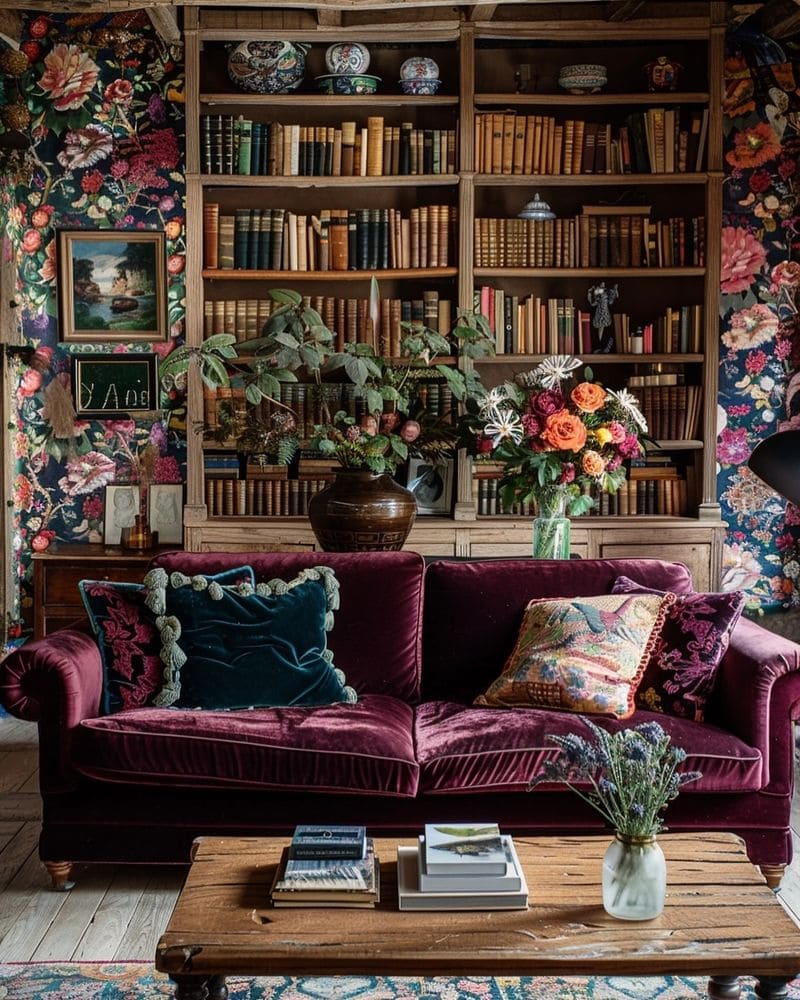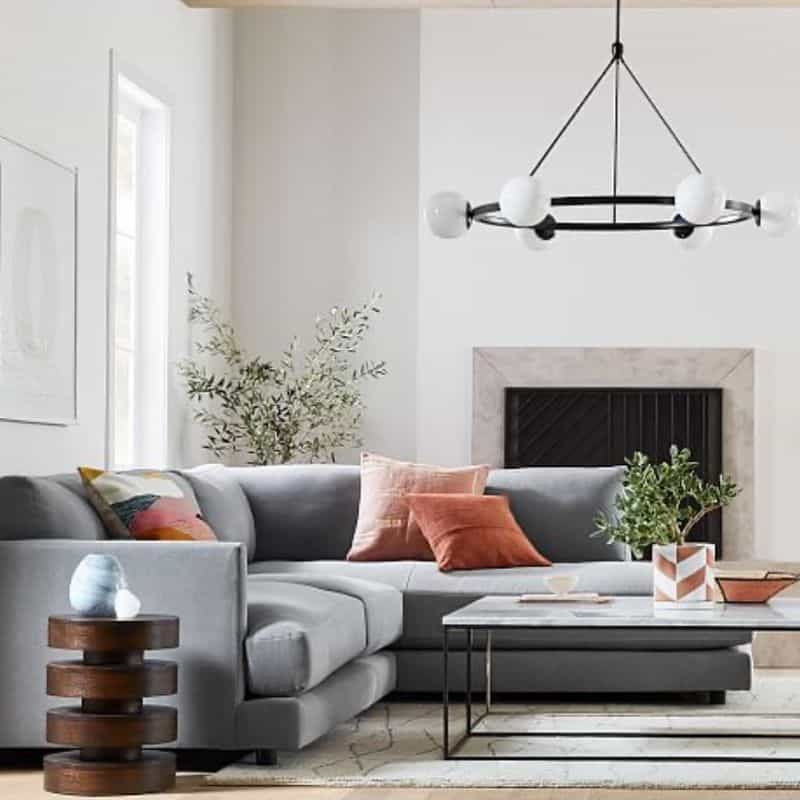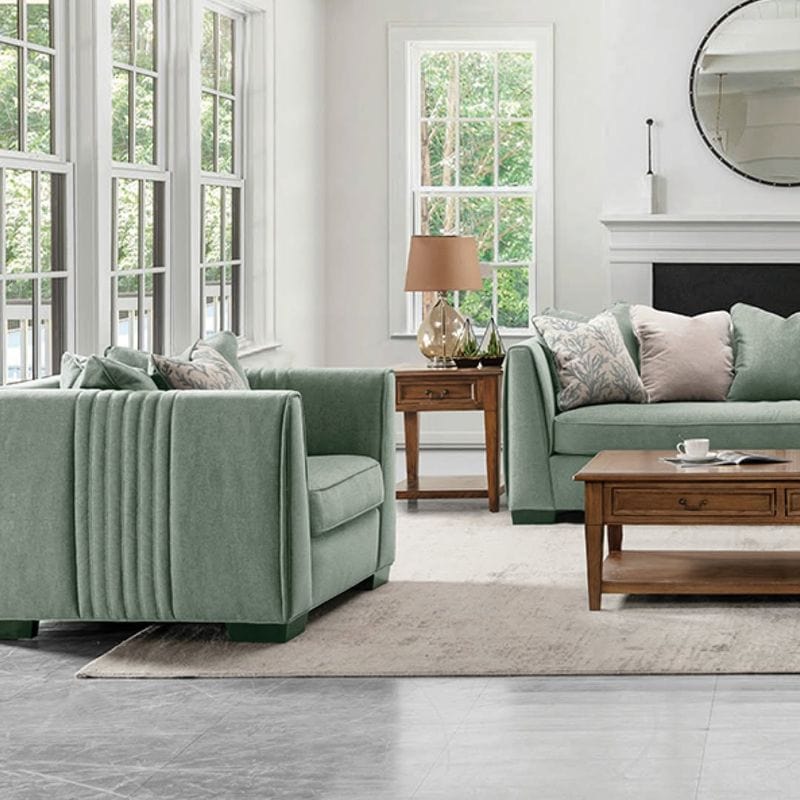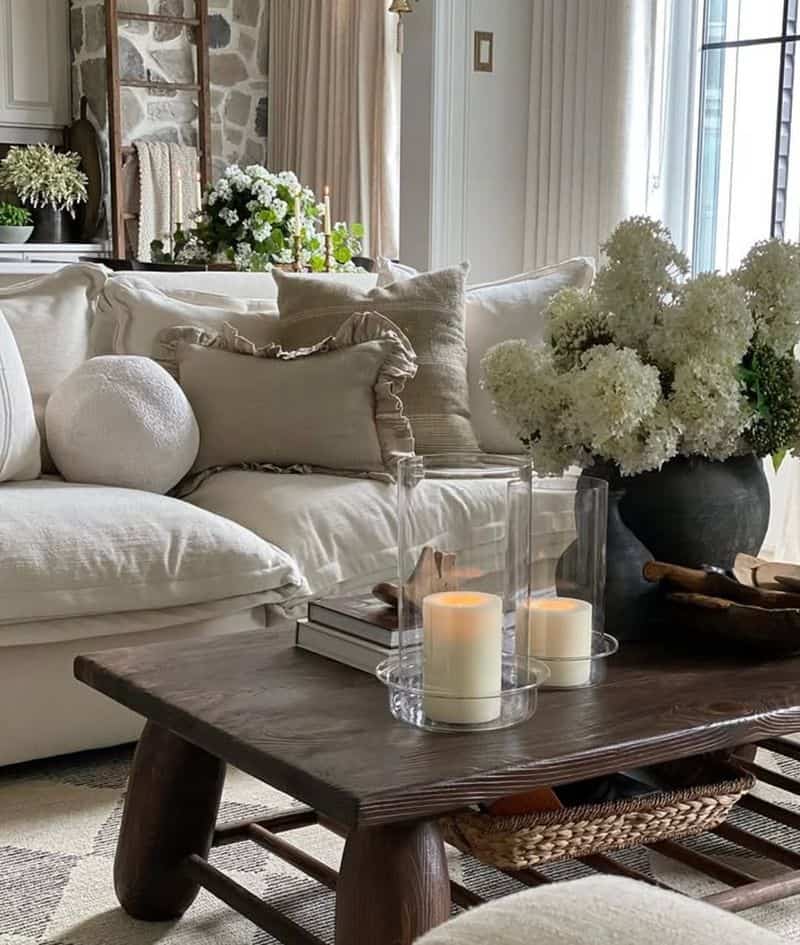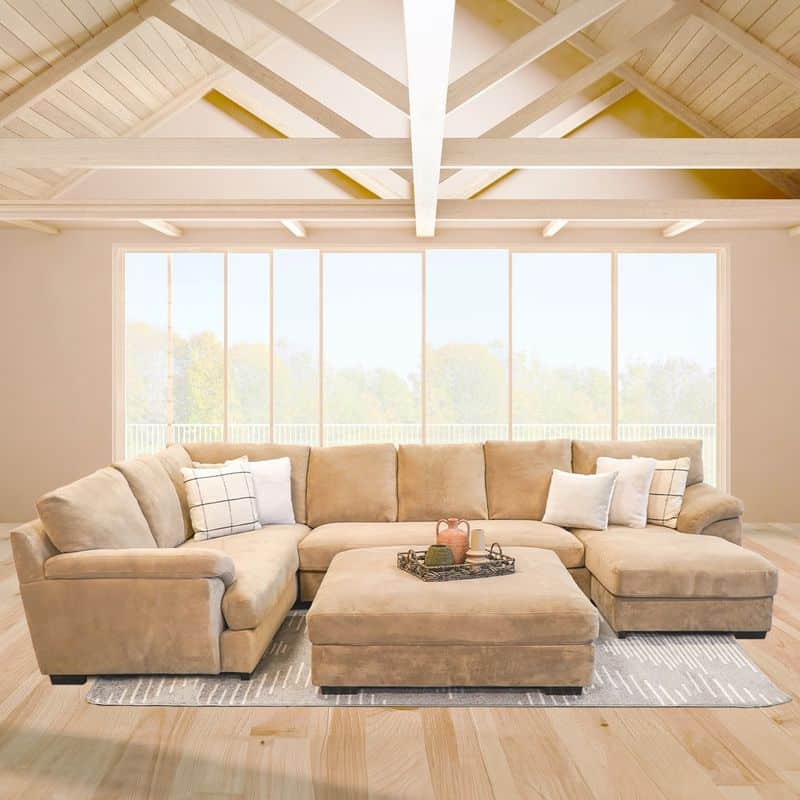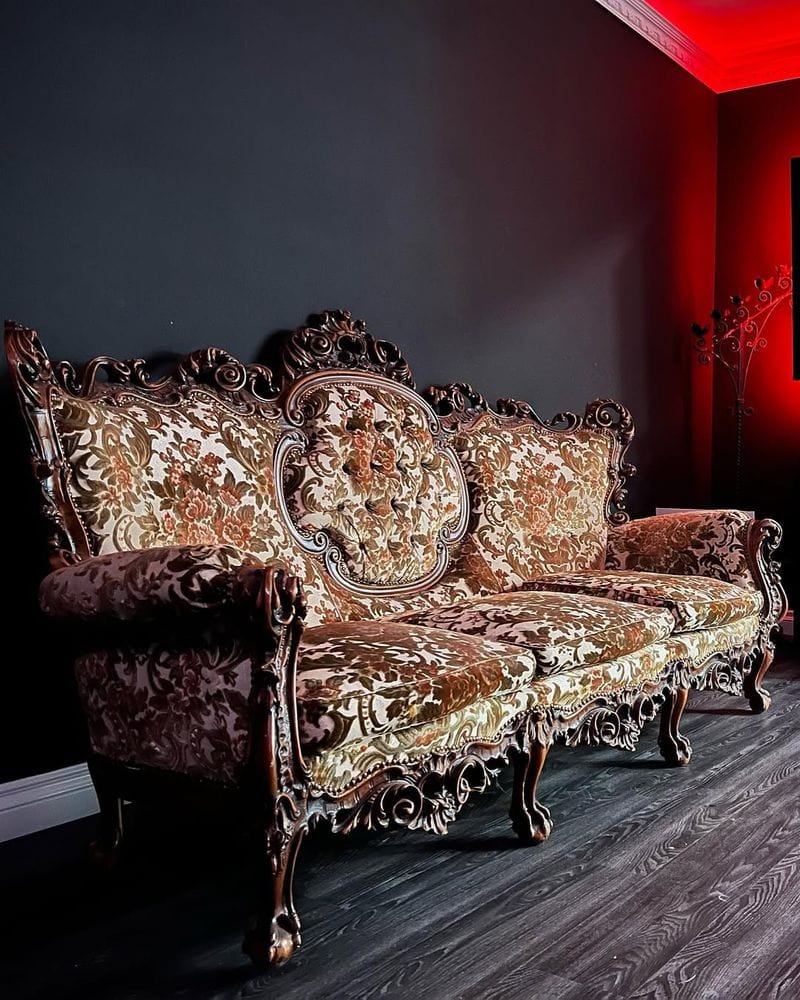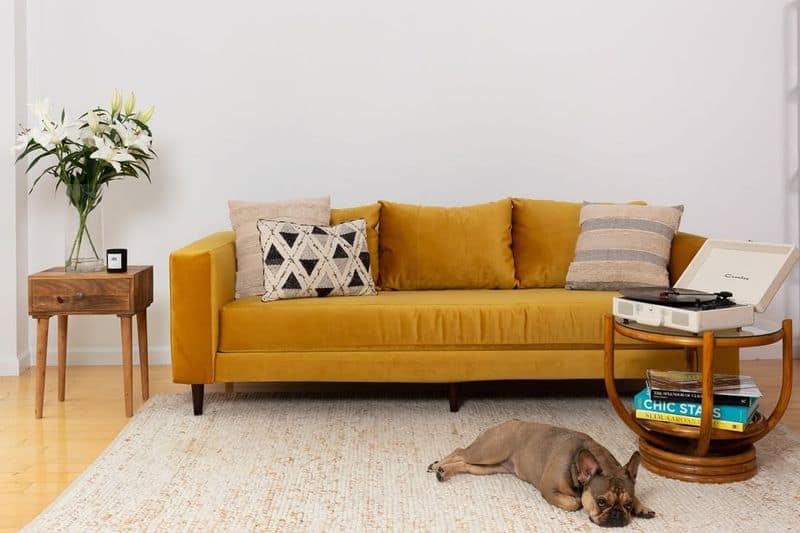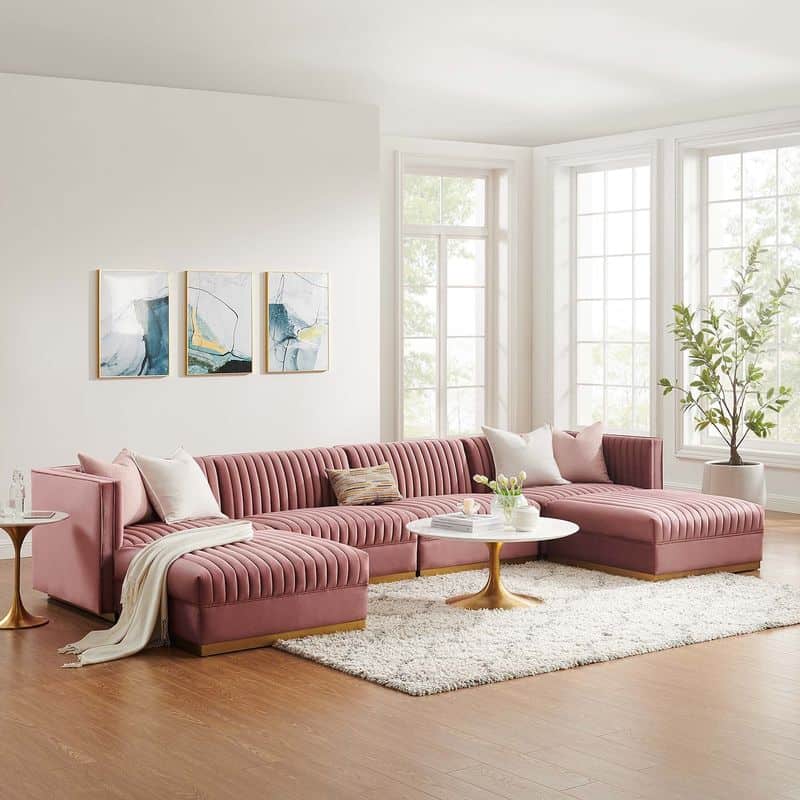In the ever-evolving world of interior design, some couch colors have fallen out of favor, leaving a trail of outdated hues in their wake.
Whether it’s the once-coveted jewel-toned velvets or the overbearing vivid reds, these colors are now more likely to draw a cringe than a compliment.
Join us as we explore 10 couch colors that have seen better days and discover why they no longer hold a place in modern homes.
1. Jewel-Toned Velvets
Once the epitome of luxury, jewel-toned velvet couches have lost their luster in modern design. These opulent colors, reminiscent of a bygone era, can overwhelm a room rather than enhance it.
Picture a deep emerald or sapphire sofa; while lush, it might feel more like a relic than a statement piece today.
Modern interiors favor neutrality and versatility, pushing these once-dazzling hues to the back of the design closet.
The lush texture combined with rich colors often clashes with minimalist or Scandinavian-inspired spaces. Jewel tones now find themselves more at home in vintage photos than cutting-edge decor.
2. Cool-Toned Gray
Cool-toned gray couches once symbolized chic modernity, but they now feel cold and uninspired.
These somber hues can leave living spaces feeling more like a doctor’s office waiting room than a welcoming home.
Gray’s neutrality, once its strength, has become its downfall, creating spaces that lack warmth and character.
As trends shift towards bolder, more expressive designs, cool-toned grays are being replaced by shades that evoke warmth and comfort.
Cool gray no longer feels like a fresh canvas but rather a dull backdrop that fails to spark joy in contemporary interiors.
3. Sage Green
Sage green couches once promised a touch of nature indoors, but they’ve since wilted in popularity. This soft green, while soothing, can appear washed out and uninspired in modern settings.
The subtle nature of sage green often makes it fade into the background rather than stand out as a stylish choice.
As interior design embraces more vibrant and audacious palettes, sage green finds itself outmatched and outmoded.
Although calming, it lacks the boldness needed to anchor a room, leaving it overlooked in favor of more dynamic hues.
4. White
The pristine white couch, once a beacon of elegance, now screams impracticality. While it may look chic, one spill is all it takes to transform this pristine piece into a canvas of stains and regret.
White couches demand constant vigilance and a spotless environment, making them less appealing for families and pet owners.
In today’s fast-paced world, where practicality reigns, white couches have taken a backseat to darker, stain-disguising alternatives.
Although they can complement a minimalist aesthetic, their high-maintenance nature makes them a less favored choice.
5. Vivid Red
Vivid red couches once boldly declared their presence in a room, but today, they tend to clash rather than complement. The intense hue can quickly become overbearing, overshadowing other design elements.
While red can evoke passion and energy, in the form of a couch, it often feels more like a design mistake than a bold choice.
As trends move toward more harmonious and balanced interiors, vivid red finds itself sidelined. It’s a color that’s more likely to raise eyebrows than hearts, leaving it in the realm of outdated design choices.
6. Beige Microfiber
Beige microfiber couches, once the workhorse of family rooms, have lost their appeal in modern design. Their once-popular practicality has been overshadowed by their bland appearance.
The neutral tone, intended to match everything, now seems more like a lack of style.
In today’s design world, where personality and unique touches are celebrated, beige microfiber has become synonymous with outdated and uninspired decor.
While durable, its lack of character makes it a less desirable choice, leaving it behind in the dust of more colorful and textured options.
7. Overly Ornate Designs
Couches with overly ornate designs were once the height of sophistication, but now they feel like relics of a more ostentatious time.
The intricate patterns and lavish details can overwhelm modern minimalist spaces.
What was once considered luxurious now feels cluttered and excessive. As contemporary design embraces simplicity and clean lines, these ornate pieces seem out of sync with the prevailing aesthetic.
They often conjure images of a grandmother’s parlor rather than a sleek, modern home, making them a less favored choice for today’s discerning decorators.
8. Pastel Mint
Pastel mint couches, with their soft and playful hue, once added a touch of whimsy to living spaces. However, this color now feels more juvenile than joyful.
The light, airy nature of pastel mint might seem refreshing, but it often lacks the sophistication required in modern interiors.
As design trends lean towards rich, saturated colors or neutral palettes, pastel mint falls short in making a stylish impact.
It often appears as a whimsical throwback rather than a sophisticated choice, leaving it behind in contemporary design preferences.
9. Deep Mustard Yellow
Deep mustard yellow couches, once a nod to retro chic, now seem stuck in the past. This bold color can be polarizing, often clashing with modern color schemes and decor elements.
While it can evoke warmth, mustard yellow frequently feels more like a design misstep than a stylish choice.
As interiors move towards more cohesive and harmonious palettes, this color struggles to find its place. Its boldness is often more disruptive than delightful, earning it a place on the list of outdated couch colors.
10. Dusty Pink
Dusty pink couches, once the darling of feminine interiors, now seem out of touch. This soft hue, while once charming, now appears outdated amidst modern design trends.
Dusty pink can easily feel overly feminine, which limits its versatility in shared spaces. As contemporary decor embraces more inclusive and varied color schemes, dusty pink often feels like a relic of a past era.
The color struggles to adapt to today’s eclectic and dynamic interiors, leaving it behind in the race for modernity.

